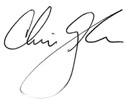The squeeze is on in medicine; no one would deny that. Though costs have leveled somewhat in recent years, we still spend an unsustainable 20 percent of our budget, $2.79 trillion in 2012, or about $8,915 per person on health care. Combine the cost and efficiency pressure with the influx of new technologies and the swelling ranks of an aging patient population and it’s likely 10 years from now, we may not even recognize what the health-care system will have evolved into.
On the plus side, says the optimist, a more efficient new system will push activities such as data-collection and monitoring treatment to lower-level members of the new health-care team, freeing physicians and specialists to practice at the highest level of their training.
Nearly half of the 30 fastest-growing occupations from 2012 to 2022 will be health care-related, according to Bureau of Labor Statistics estimates. Among them: home health aides, physician assistants, occupational therapy assistants and dental hygienists.
And it’s not just new levels of personnel that will settle into the space formerly reserved for the doctor and the patient; as much as anything, technology will be occupying that space. Patients can sit down today at a shopping mall and have their blood pressure, vision and BMI checked by kiosks. Again, the optimist says, a better-educated and more involved patient can only improve the quality of medical care. From telehealth to robotic surgery to contact lens-based detection of disease, or innovations we haven’t even imagined, what another decade of innovation will bring couldn’t be more exciting.
As long as we stop along the way and remember to ask of each of these new systems, innovations and improvements: Is it really better than what we have now?
 |



